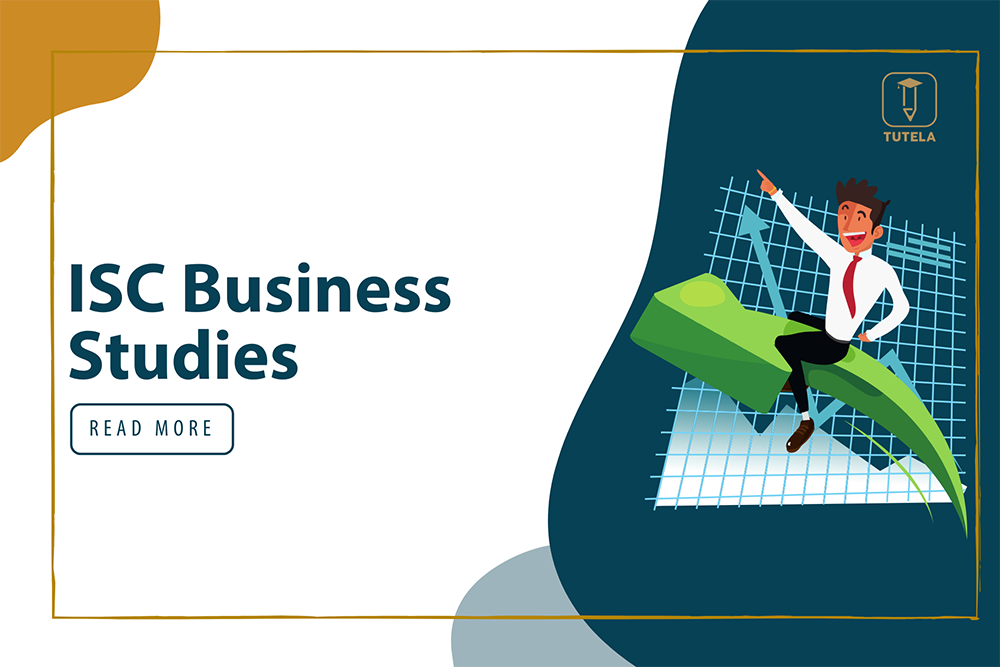
Business is a dynamic process that brings together technology, natural resources, and human initiative in a constantly changing global environment. For someone to understand the framework with which a business operates, a detailed study of the organization and management of business processes and their interaction with the environment is required.
The Aim of the Subject-
Topics in the Subject:
Class XI
The Office
(i) Meaning and evolution of the modern office.
(ii) Functions of an office.
(iii) Office services – secretarial support, record management, distribution of mail, control of stationery, reception, operation of switchboards, duplicating and copying, etc.
(iv) Centralization or decentralization of office services. Departments in a large office: production; personnel; marketing; finance and accounting; secretarial.
(vi) Role of the office as an information processing centre.
(vii) Office Manager: functions and his qualities.
Office Accommodation and Environment-
(i) Meaning of office accommodation.
(ii) Principles and factors involved in the selection of office site.
(iii) Office layout: meaning; purposes; principles; steps; types.
(iv) Physical factors: outline of the effects of – lighting, ventilation, noise, cleanliness, etc. on the office work.
Organizing an Office
(i) Meaning and importance of organization.
(ii) Steps in the organization of the office.
(iii) Principles of organization.
(iv) Types of organizations – line, functional, line and staff, committee.
(v) Features of the above organization structures.
(vi) Meaning of departmentalization.
(vii) Methods of departmentalization (function, territory, process, production, or service).
(viii) Visual presentation of – organization; structure (organization chart – meaning, purpose, and type of organization charts).
Authority and Responsibility-
(i) Meaning of – authority; responsibility; accountability and their inter-relationship.
(ii) Sources of authority.
(iii) Meaning of delegation.
(iv) Principles/rules of delegation of authority.
(v) Distinction between centralization and decentralization of authority.
Office Records Management-
(i) Meaning of Records Management and its essential features.
(ii) Filing – characteristics of a good filing system; classification of records for filing (alphabetical, numerical, etc.); modern methods – vertical, horizontal, lateral, and suspension; equipment; types of files; filing routine; disposal of obsolete documents.
(iii) Indexing: importance; types – page index, card index, strip index, rotary index.
(iv) Micro-filing: merits and demerits; types – roll film, fiche, jackets, etc.
(v) Meaning of electronic filing.
Office Reprography-
(i) Methods of duplicating: spirits or hectograph stencil or mimeograph/ink; offset lithography.
(ii) Types of photocopying; reflex, diazo, electrostatic, dual spectrum, etc.
(iii) Printing: considerations for the choice between in-house and outside printing; offset printing and letterpress printing.
(iv) Typewriters: manual; electric; automatic; electronic.
Office Automation
(i) Meaning of office automation.
(ii) Merits and demerits of office automation.
(iii) Uses of – adding and listing machines; calculators; cash registers; computers.
(iv) Components of computers for processing data: input units; central processing unit; output units; backing store.
(v) Elementary knowledge of the types of computers: mainframe, mini, micro.
Class XII
Staff-
(i) Staff recruitment: meaning; sources – internal, external.
(ii) Staff selection procedures.
(iii) Staff training: importance; methods – on the job, off the job; preparation of the training program.
(iv) Staff morale: meaning; the importance of morale; factors affecting morale; methods of raising morale; indicators of low morale; the importance of teamwork.
(v) Staff remuneration: methods – time rate, wage rate, incentive methods (Halsey, Rowan plan), wage records (time card, attendance book, payslip, payroll, etc.).
(vi) Staff motivation: meaning and importance; factors of motivation; Maslow’s theory of the hierarchy of human needs.
(vii) Staff leadership: leadership qualities; leadership styles.
(viii) Staff appraisal: purpose; merits; methods – merit grading, interviewing, reporting.
(ix) Staff promotion and transfer: meaning and importance; basis (seniority vs. ability); the need for promotion policy; process for selection; types of transfer.
(x) Staff dismissal: grounds for dismissal; procedure
Office Communication-
(i) Meaning and importance of communication and essentials of effective communication.
(ii) Methods: oral, written and visual – face to face communication; reception – qualities of a receptionist, procedure of reception, organization of reception area; interviewing types – appraisal, disciplinary, recruitment, telephone – qualities of an efficient telephone operator, procedure rules for internal and external services, types of calls, modern developments in telephone communication, telephone switch board equipment, others – telex, fax, tele-write, video conferencing, cellular phones, cordless phones, loudspeaking, tele-text, staff locating systems – public address systems, bells and buzzers, lighted signals, wireless signals; written correspondence – essentials of a good business letter, structure of a letter, types of letters (only the following types: application for job, enquiry, quotation, order, complaints, drafting of interview letter, offer of appointment), letter for quick communication (standard letters, blitz reply, monogram, D.O. letters, return memo set), -internal written communication (memos, circulars, office orders), telegrams (types of telegrams, telegraphic addresses, essentials of a telegram, drafting a telegram); report writing – essentials of a good reporter, format simple informal reports (exclude company reports); meetings – meaning, requisites of a valid meeting, types (statutory, annual, extraordinary, board), secretary’s duties, preparation of notices, agenda, chairman’s role and power, preparation of minutes from given data only, terms used and procedures of meetings; motions; resolutions; adjournment; postponement; voting; proxy; point of order, etc.
(iii) Visual communication and its importance: graphs – nature and types (Z-graph, line-graph, bar graphs); diagrams – nature and types (pictogram pie, histogram); tables – nature and types, presentation of specific data in tabular form.
(iv) Organization of mailroom in a large office: handling of incoming and outgoing mail; mechanical aids used; post office services used.
For any help, feel free to contact us by filling in our student assistance form.
SOURCE: https://www.cisce.org/